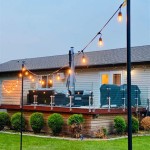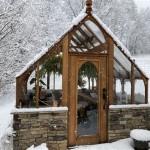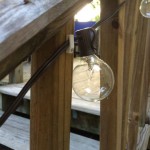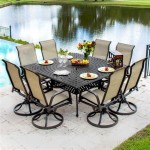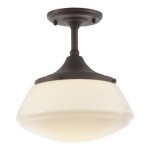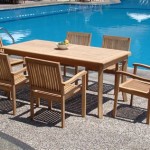Enhancing Your Home's Ambiance and Security with Outdoor Lights
Outdoor lighting plays a crucial role in enhancing the aesthetic appeal, safety, and security of a home. Strategic placement of outdoor lights can transform a property's nighttime appearance, highlight architectural features, and create a welcoming environment for residents and visitors alike. Beyond aesthetics, well-designed outdoor lighting deters potential intruders and improves visibility for navigating pathways and outdoor spaces after dark. This comprehensive guide explores the various types of outdoor lighting, considerations for installation, and best practices for maximizing their benefits.
The advantages of outdoor lighting extend beyond mere illumination. Adequate lighting can extend the usability of outdoor spaces, allowing homeowners to enjoy patios, decks, and gardens well into the evening. Furthermore, carefully chosen lighting fixtures can complement the home's architectural style, adding character and visual interest. The selection of appropriate outdoor lighting requires a careful assessment of the property's landscaping, architectural design, and security needs. Considerations must also be given to energy efficiency and long-term maintenance.
Understanding the Different Types of Outdoor Lighting
A diverse range of outdoor lighting options caters to varying needs and preferences. Each type offers unique characteristics in terms of brightness, energy consumption, and aesthetic appeal. The following are some of the most common types of outdoor lighting fixtures:
Path Lighting: Path lights are designed to illuminate walkways, driveways, and garden paths. They provide safe passage by highlighting potential hazards and preventing falls. Path lights typically feature low-level illumination to avoid glare and maintain a comfortable ambiance. Fixtures are available in various styles, including bollard lights, mushroom lights, and recessed ground lights. Solar-powered path lights are a popular energy-efficient option.
Spotlights: Spotlights are directional lights used to highlight specific features, such as trees, shrubs, or architectural details. They create a dramatic effect and add visual interest to the landscape. Spotlights are available in various wattages and beam angles, allowing homeowners to customize the illumination to suit their needs. Adjustable spotlights offer flexibility in aiming the light beam.
Floodlights: Floodlights provide broad illumination for large areas, such as driveways, parking areas, and backyards. They are often used for security purposes, deterring intruders and improving visibility. Floodlights typically utilize high-intensity bulbs and are available in various styles, including motion-activated models. Proper aiming is essential to minimize light pollution and avoid glare.
Wall Lights: Wall lights are mounted on exterior walls to illuminate doorways, porches, and patios. They provide both functional and decorative lighting, enhancing the home's curb appeal and creating a welcoming entrance. Wall lights are available in a wide range of styles, from traditional lanterns to modern sconces. Selecting fixtures that complement the home's architectural style is crucial.
Deck and Patio Lights: Deck and patio lights are designed to illuminate outdoor living spaces, creating a comfortable and inviting atmosphere. Options include string lights, post lights, and recessed deck lights. Low-voltage lighting is often preferred for decks and patios to minimize glare and create a relaxed ambiance. Dimmable lights offer flexibility in adjusting the brightness level.
Underwater Lights: Underwater lights are specifically designed for illuminating ponds, fountains, and swimming pools. They create a stunning visual effect and enhance the beauty of water features. Underwater lights must be waterproof and corrosion-resistant to withstand the harsh underwater environment. LED underwater lights are a popular energy-efficient option.
String Lights: String lights offer a versatile and decorative lighting option for patios, decks, and gardens. They create a festive and inviting atmosphere and are available in various styles, including globe lights, fairy lights, and Edison bulb lights. String lights can be easily installed and repositioned, making them a popular choice for temporary or seasonal lighting.
Key Considerations for Outdoor Lighting Installation
The installation of outdoor lighting requires careful planning and execution to ensure safety and optimal performance. Before beginning any installation project, it is essential to consult local building codes and regulations. Electrical work should always be performed by a qualified electrician to ensure compliance with safety standards. Several key factors should be considered during the installation process:
Placement and Positioning: The placement of outdoor lights is crucial for achieving the desired lighting effect. Consider the areas that need illumination, the architectural features that you want to highlight, and the overall ambiance that you want to create. Avoid placing lights in positions that will cause glare or light pollution. Experiment with different placements before permanently installing the fixtures.
Wiring and Electrical Connections: Ensure that all wiring and electrical connections are properly insulated and protected from the elements. Use weatherproof connectors and conduit to prevent water damage and corrosion. Bury underground wiring at the appropriate depth and mark the location to avoid accidental damage. Consult a qualified electrician for any electrical work that you are not comfortable performing yourself.
Voltage and Power Requirements: Choose lighting fixtures with the appropriate voltage and power requirements for your electrical system. Low-voltage lighting is often preferred for outdoor applications due to its safety and energy efficiency. Ensure that your electrical circuits can handle the additional load of the outdoor lighting fixtures. Consult an electrician to determine the appropriate circuit size and wiring gauge.
Weather Resistance: Select lighting fixtures that are specifically designed for outdoor use and are resistant to weather conditions such as rain, snow, and sunlight. Look for fixtures with a high IP (Ingress Protection) rating, which indicates the level of protection against dust and water. Choose materials that are resistant to corrosion and fading, such as stainless steel, aluminum, or composite materials.
Energy Efficiency: Opt for energy-efficient lighting options, such as LED bulbs, to reduce energy consumption and lower electricity bills. LED bulbs offer long lifespan and produce minimal heat, making them a sustainable choice for outdoor lighting. Consider using solar-powered lights for areas where electrical wiring is not readily accessible. Use timers and motion sensors to automatically turn lights on and off, further conserving energy.
Safety Considerations: Always prioritize safety when installing outdoor lighting. Disconnect the power supply before working on any electrical circuits. Wear appropriate safety gear, such as gloves and eye protection. Follow all manufacturer's instructions for installation and operation. If you are unsure about any aspect of the installation process, consult a qualified electrician.
Maximizing the Benefits of Outdoor Lighting
To fully realize the benefits of outdoor lighting, it is essential to implement effective design strategies and maintenance practices. Proper planning and execution can transform a property's appearance, enhance its security, and create a more enjoyable outdoor living environment.
Layering Light: Layering light involves using multiple types of outdoor lighting to create a balanced and visually appealing effect. Combine ambient lighting, task lighting, and accent lighting to achieve the desired illumination level and highlight specific features. Ambient lighting provides overall illumination for the area, while task lighting provides focused illumination for specific activities. Accent lighting highlights architectural details, landscaping features, or water features.
Creating Focal Points: Use outdoor lighting to create focal points and draw attention to specific areas of the property. Highlight architectural features such as columns, arches, or gables with spotlights or wall lights. Illuminate trees, shrubs, or flowerbeds with uplighting or path lighting. Create a dramatic effect by illuminating water features with underwater lights.
Enhancing Security: Strategically placed outdoor lights can significantly enhance security by deterring intruders and improving visibility. Install motion-activated floodlights near entry points and high-traffic areas. Illuminate walkways and driveways to prevent falls and accidents. Use timers to automatically turn lights on and off at specific times, creating the illusion of occupancy.
Maintaining Fixtures: Regular maintenance is essential for ensuring the longevity and optimal performance of outdoor lighting fixtures. Clean fixtures regularly to remove dirt, dust, and debris that can reduce their brightness. Replace burned-out bulbs promptly to maintain consistent illumination. Inspect wiring and connections for damage or corrosion and repair as needed. Trim vegetation that may be obstructing the light beam.
Minimizing Light Pollution: Be mindful of light pollution and take steps to minimize its impact on the environment and neighboring properties. Use shielded fixtures that direct light downwards, preventing it from escaping into the sky. Avoid over-illuminating areas and use only the amount of light that is necessary. Consider using dimmable lights to adjust the brightness level as needed. Respect local ordinances regarding light pollution and outdoor lighting regulations.
Seasonal Adjustments: Adjust outdoor lighting based on the changing seasons and weather conditions. Increase the brightness of lights during the winter months to compensate for shorter days and reduced sunlight. Adjust the angle of spotlights to account for changes in foliage growth. Consider using holiday lights to add festive cheer during the holiday season.
By carefully considering these factors and implementing best practices, homeowners can create an outdoor lighting scheme that enhances their property's beauty, security, and functionality. A well-designed outdoor lighting system not only improves the nighttime ambiance but also adds value and enjoyment to the home for years to come.

Outdoor Lighting For Your Home Planning Tips Gira

8 Reasons Your Home Will Benefit From Outdoor Lighting

Common Outdoor Lighting Mistakes That You Should Avoid Simple Blog

Want Smarter Outdoor Lighting At Home Here Are Your Options Cnet

How To Hang Christmas Lights Hanging Outside

Landscape Lighting Ideas For Your Front And Backyard The Home

12 Creative Outdoor Lighting Ideas For Front Of House Rc

Feng Shui And Outdoor Landscape Lighting

Utilizing Well Lights In Your Outdoor Spaces Lightstyle Of Tampa Bay

4 Ways To Use Uplights Outdoor Lighting Rensen House Of Lights

